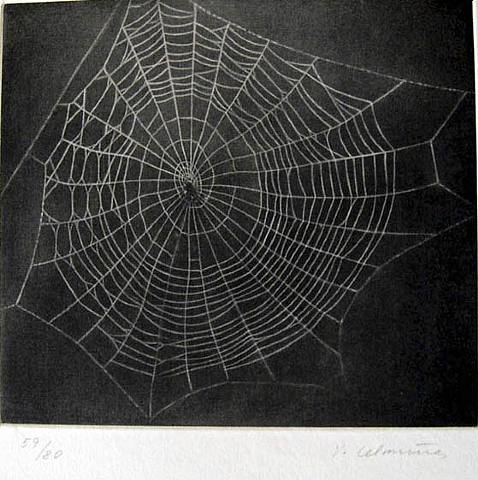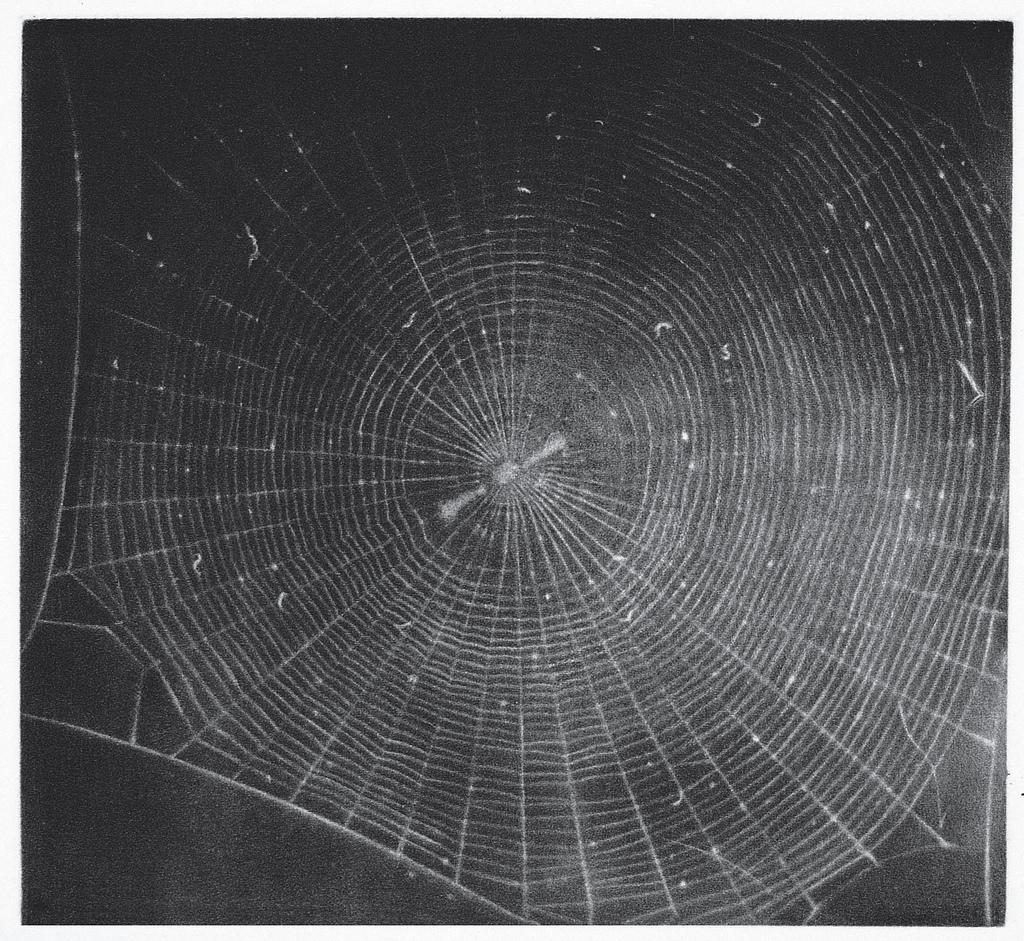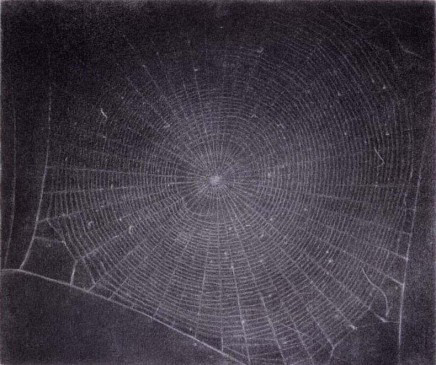Celmin's later work sees her retreat from world affairs to explore sublime, natural imagery deliberately selected to emphasize her formal procedures and conceptual concerns, often recording a specific human glimpse through a camera which is ephemeral yet frozen in time. There is evidence of time elapsed in production, and it is this intuitive sense that encourages the viewer to mimic this in a prolonged act of looking.
Celmins's drawings are first and foremost detailed records of seeing and doing, transcription and adjustment, working and reworking, each tiny mark in graphite - made or erased - an index of a roughly equivalent abstract fraction of a source photograph. The drawings are built up in infinitesimal increments until an image emerges and sign and signified, drawing and photograph, finally relate but never so much so that one loses sight of each of the careful marks that compose the whole. The surfaces of the oceanscapes are dense with information, atmospheric effects and moody chiaroscuro, but despite the vigor of Celmins's efforts, her encounter with the paper is never heavy enough to violate or pulverize the surface - one never senses the three-dimensionality paper can assume when heavily worked.
Large Desert (1975)
Ocean paintings
Ocean , 2003
Ocean , 2005
Ocean Surface I, 2006
Ocean with Cross I, 2005
Ocean Surface I, 2000
Big Sea I, 1969
Big Sea II, 1969
Night Sky paintings
Night Sky , 2000
December 1984 , 1985
Untitled No.8, Woodcut
Spiderweb series
Web #5, 2000
Web Ladder, Vija Celmins, 2010. 1-plate, 1-color mezzotint, printed on bright white paper.
Celmins' series of spider web drawings further complicate the relation between her drawing practice and her photographic sources. With the exception of one work (Web # 9, 2006), Celmins renders her ethereal white webs by carefully rubbing out sections of an evenly applied charcoal ground with an eraser. The principal image, therefore, is actually generated by drawing with negative space. So, while Celmins's source remains, as ever, a photograph, her drawing is more akin to the negative from which the photograph was developed. The results of this process are ineffably delicate webs of light, which stretch out across grey fields of charcoal and evoke the ghostly sight of a spider's web backlit by dull light.
Shell, Celmins, 2009-2010. Oil on canvas


















No comments:
Post a Comment